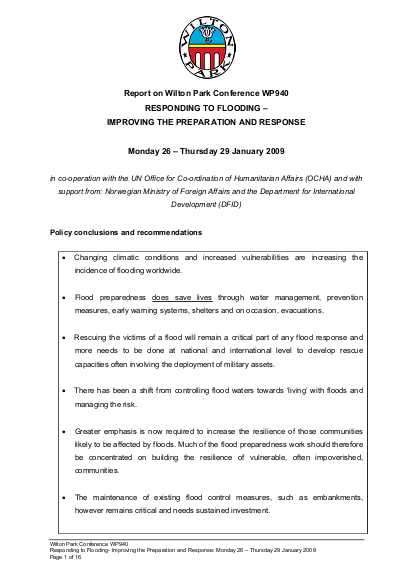
The story of Noah’s Ark is a useful reminder that flooding is nothing new. Indeed many cultures living in the Nile basin or alongside the rivers flowing from the Himalayas or in the Mekong Delta depend on annual floods for food production. However, the impact of floods and windstorms has intensified in recent decades. Climate change is expected to increase the number of extreme weather events (such as high intensity windstorms and rainfall, and sea surges, resulting in flooding on an unprecedented scale and the loss of life, livelihoods and assets). Areas not traditionally prone to flooding will be affected, including low-lying cities with poor drainage as well as more traditional rural areas in river basins.
Globally there has been a general shift from controlling flood waters, by taking defensive action against a flood, for example, using large scale infrastructure projects to hold water in retained areas, towards ‘living’ with floods and managing the risk. This change of approach needs to be long-term and sustained. An effective flood control strategy should therefore include not only natural retention measures but also prevention measures, including awareness raising, contingency planning and emergency response.
Resource collections
- Evaluating humanitarian action
- Floods
- Learning from crises
- UN Habitat - Urban Response Collection
- Urban Response - Urban Crisis Preparedness and Risk Reduction
- Urban Response Collection - Community Engagement and Social Cohesion
- Urban Response Collection - Economic Recovery
- Urban Response Collection - Environment and Climate Change
- Urban Response Collection - Housing, Land and Property
- Urban Response Collection - Urban Crisis Response, Recovery and Reconstruction
- Urban Response Collection - Urban Resilience